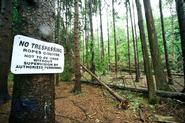
Reviews
From Booklist"Using the 1955 disappearance of a navy weather plane inside a hurricane as his reference point, Toomey roams about the presatellite history of research into the tempests. Knowledge about hurricanes was so rudimentary that determining their cyclonic structure was considered progress. From that discovery in the mid-1800s to the mid-1900s, advances in knowledge and forecasting were modest. By interspersing the history of hurricane research with the preparations of the ill-fated navy crew, Toomey effectively points out how insufficient understanding of meteorological conditions impelled weather planes to fly in such dangerous conditions. Besides the informative technical coverage about hurricane behavior, the twin-engine Neptune plane, and its weather instrumentation, Toomey delivers an understated narrative that ennobles crew members. He doesn't inflate basic information that's known about them, and alludes to their awareness of the perils in their assignment. Toomey's dramatization of scenarios of what might have happened to the crew--a ditching in the storm's eye or midair wing failure--will keep readers rapt."
Houston Chronicle:
David Toomey charts hurricane hunters' perilous work
By CHRIS KRIDLER
DAVID Toomey's Stormchasers focuses on the history of "hurricane hunters" who fly planes into hurricanes and the disaster that befell one crew.
Refreshingly, it's a riveting story that, unlike a lot of popular nonfiction, doesn't get too creative with the facts.
That said, Toomey is imaginative and compelling in his re-creation of the hurricane reconnaissance flight into Hurricane Janet in September 1955 that took the lives of nine crewmen and two journalists. He extrapolates from the known facts but doesn't take the exercise too far. The known facts are interesting enough.
In addition, he frames his tale of the flight with an exploration of the scientific theories and technological breakthroughs that have helped mold weather forecasting. The book is as much scientific chronicle as tragic adventure tale, and both stories are rich with anecdotes and lucid explanations.
The first deliberate flight into a hurricane was the result of a bet, Toomey writes, and meteorologists soon recognized the value of such excursions.
Today, the hurricane hunters who fly into tropical weather systems belong to the Air Force Reserve's 53rd Weather Reconnaissance Squadron. Despite the existence of satellite images, their readings still are invaluable to forecasters.
When such flights began in the 1940s under the auspices of what was then the Weather Bureau, the Navy and Air Force both sent planes into the massive storms. And the planes didn't have any of the satellite navigation or computers that today's planes do.
Instead, crews had to rely on early radar, visuals -- including a scope that helped them judge their drift by which way the whitecaps far below them were blowing -- and instruments whose readings could be distorted by the low atmospheric pressure in the storm.
The flight on which Toomey focuses carried an experienced Navy crew. It was the only flight ever lost in Atlantic hurricane missions, but despite the planes' overall safety record, the book shows that the frequent flights were anything but routine. The hazards were, and are, almost innumerable, and even successful flights are a heck of a ride.
Because the fliers' final radio transmission didn't reveal the details of their ultimate fate, Toomey speculates using likely scenarios, including the possibility the men ditched the aircraft.
His brief history of aircraft-ditching, with its chilling anecdotes, is one of the fascinating gems embedded in this book. Other pertinent detours include stories of devastating naval encounters with hurricanes and an account of some of the first computers to tackle forecasting.
Toomey doesn't write of the storm chasers to whom the term is commonly applied -- the people who drive after land-based storms. He writes of the first men for whom highly perilous encounters with the largest storms on earth were just a job, a job they did with understated courage.
Chris Kridler is a columnist for Florida Today. She wrote this for the Baltimore Sun.
Posted July 1, 2002
